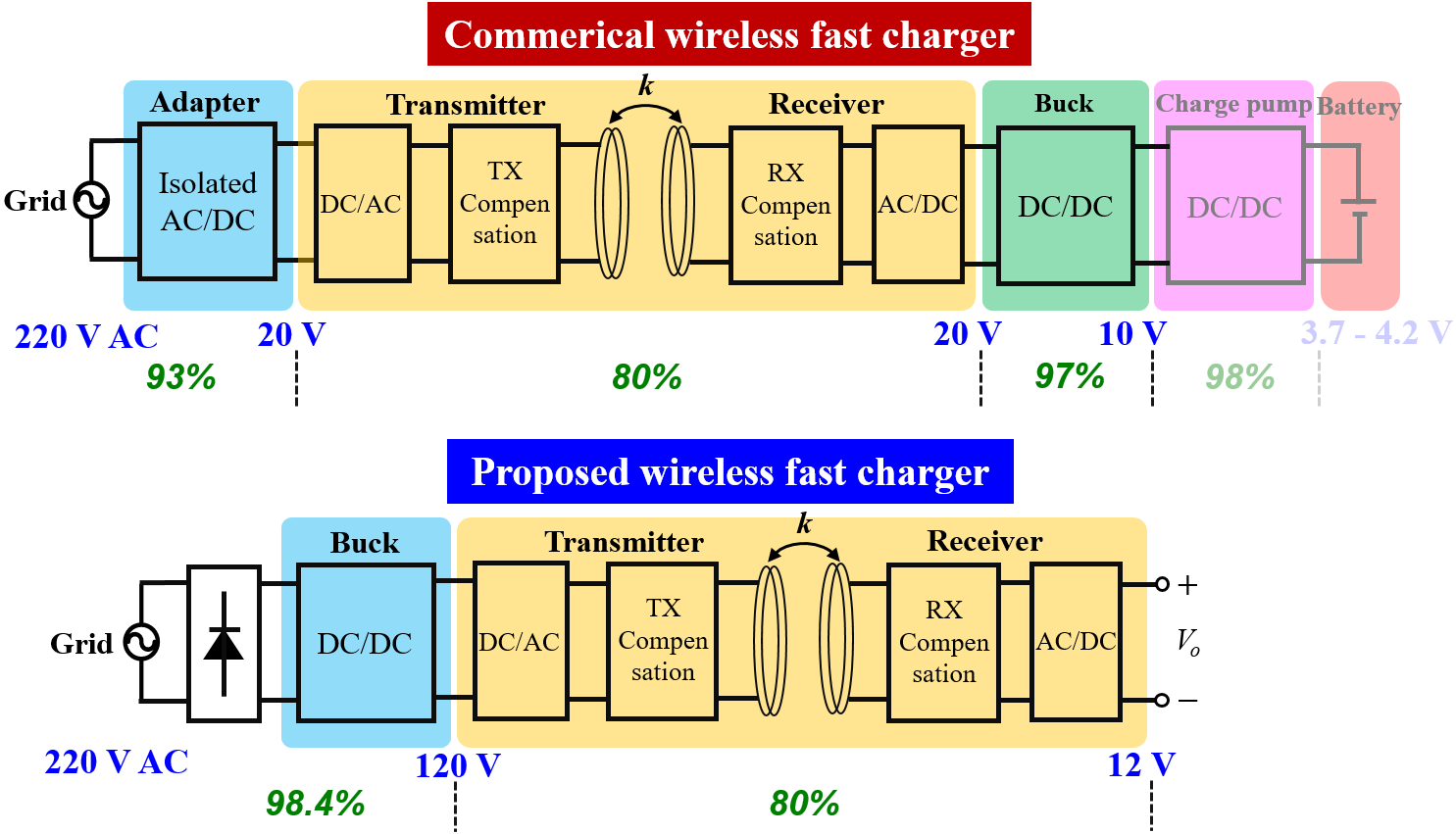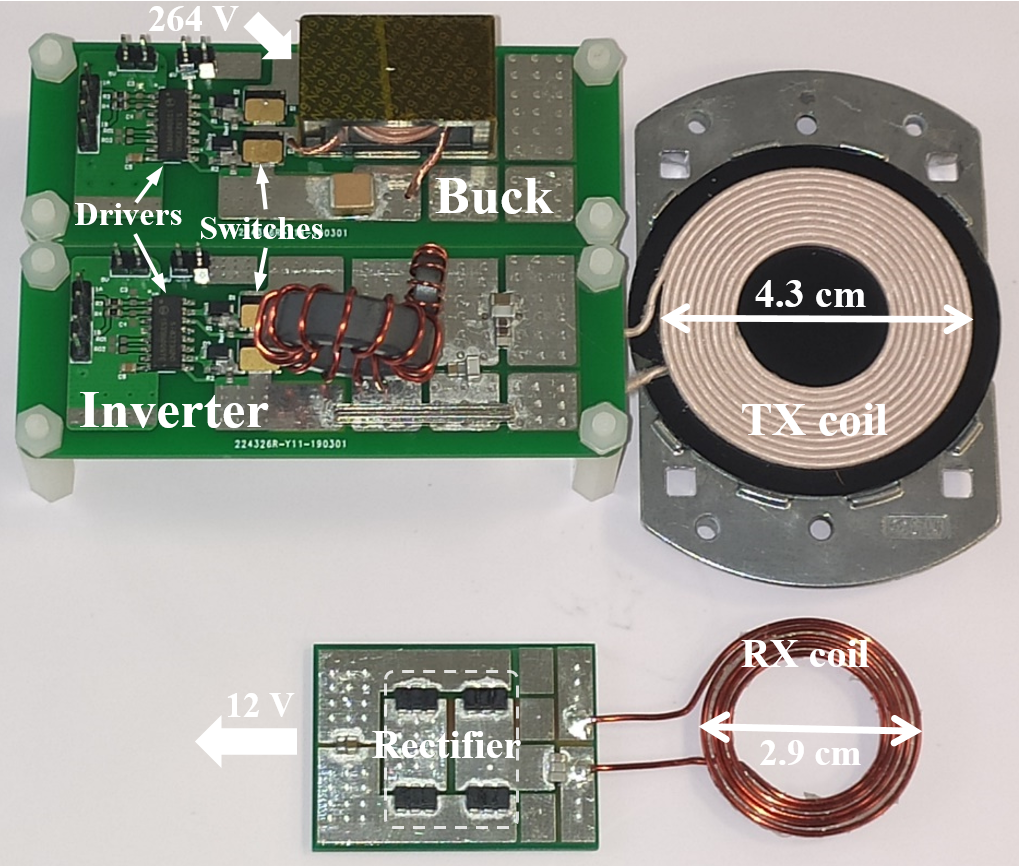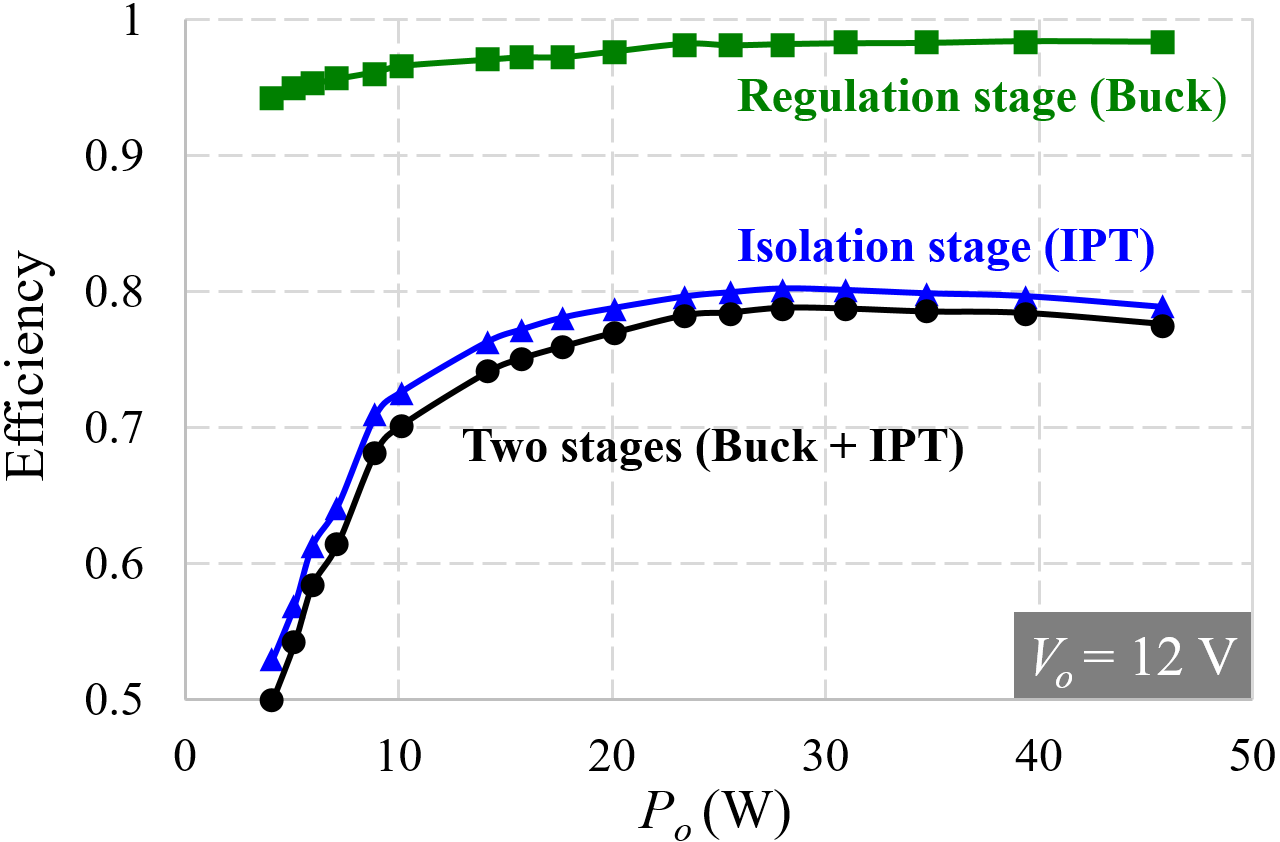SIST Assistant Professor Fu Minfan’s group developed a novel configuration for next-generation wireless fast chargers. In the prior chargers, the redundancy of power conversation stages for isolation and modulation would naturally lead to low efficiency. This issue is well addressed in the proposed two-stage configuration and the efficiency is enhanced dramatically. Their achievement is recently published in IEEE Journal of Emerging and Selected Topics in Industrial Electronics in an article entitled “A 45-W Two-Stage Wireless Fast Charger Using Unregulated Inductive Power Transfer.”
There are several merits in wirelessly powered applications, such as safety and convenience. Wireless power transfer (WPT) has been widely applied to electric vehicles, consumer electronics, biomedical implants, etc. However, in the low-power devices, the wireless charger is developed based on its wired counterpart, and more isolation and regulation stages have to be added. Such a redundancy issue leads to low charging efficiency (<60%).
In this paper, a novel two-stage configuration for wireless fast charger is proposed based on the unregulated inductive power transfer (IPT) stage and DC/DC modulation stage. The demands, (like isolation, voltage step-down, and modulation) are still maintained in a simplified system. It should be noted thatit is the first time to use the IPT stage to achieve the high voltage step-down function. In the final experiment, the 45-W prototype achieves 264-V/12-V power conversion and the peak efficiency is 78%. The power transfer efficiency and power density are improved significantly compared to the state of the art.
The dramatic improvements clearly show the unique benefit of designing the IPT stage as a DC-DC transformer. This achievement is particularly meaningful for the development of next-generation wireless fast chargers.
The first author of this work is SIST Ph.D. student Zhao Peng; MS student Zheng Guangce, Ph.D. student He Rong and Dr. Liu Yu are the co-authors; and Dr. Fu Minfan is the corresponding author. This research work was supported by National Natural Science Foundation of China and Shanghai Sailing Program.
Read more at:https://ieeexplore.ieee.org/document/9362124

Figure 1.The configuration of wireless fast charger:commercial
vs. proposed.

Figure 2. Experiment prototype

Figure 3. Power transfer efficiency




 沪公网安备 31011502006855号
沪公网安备 31011502006855号


